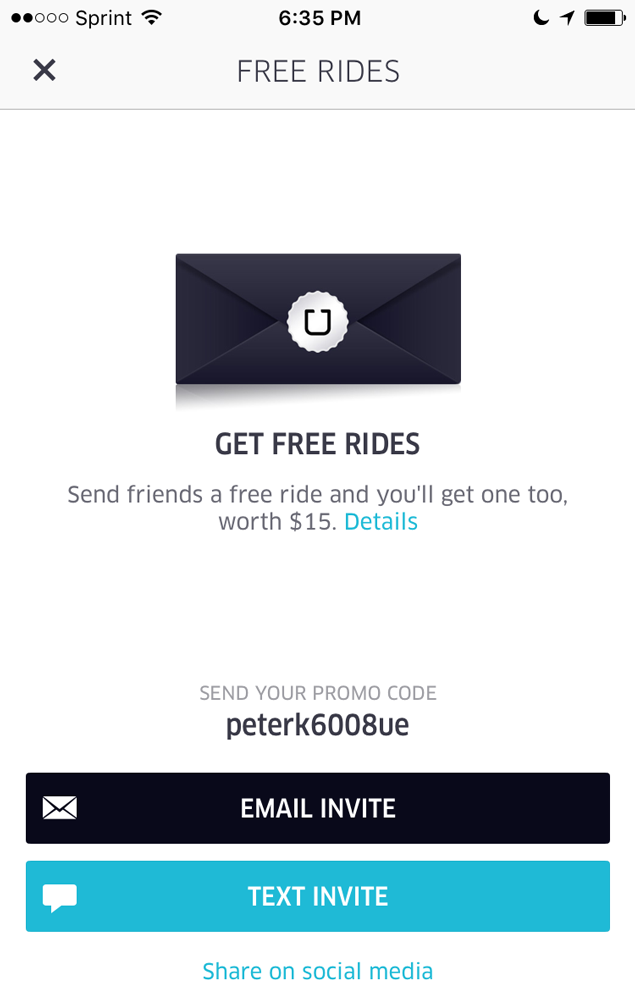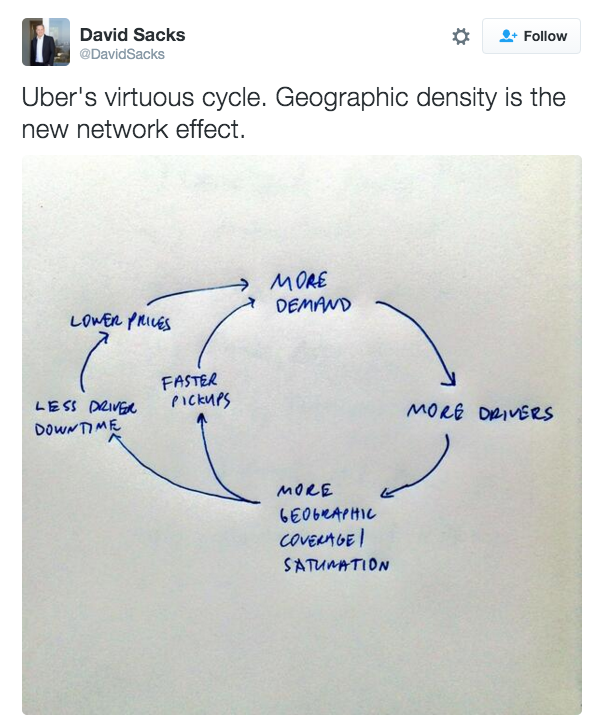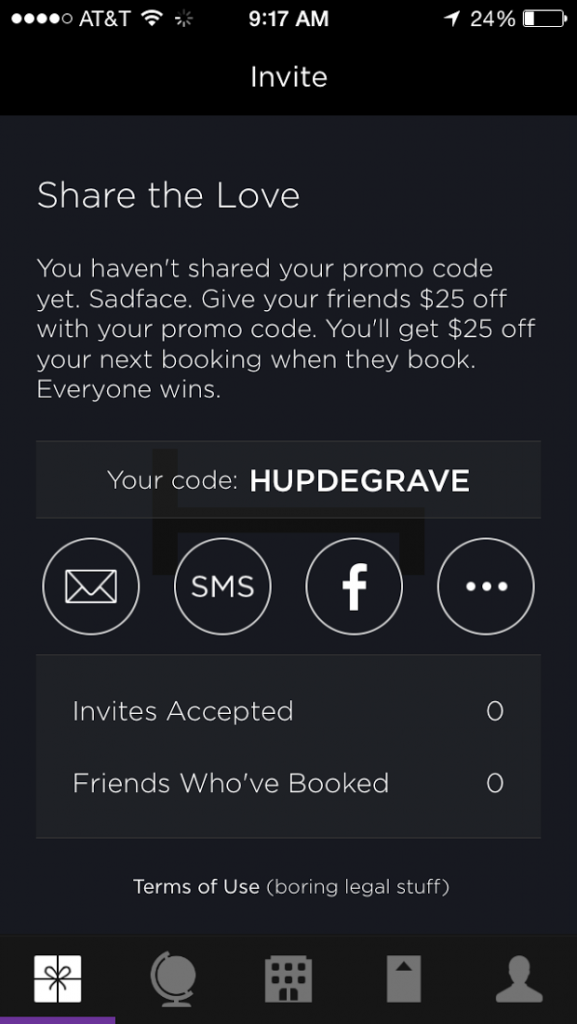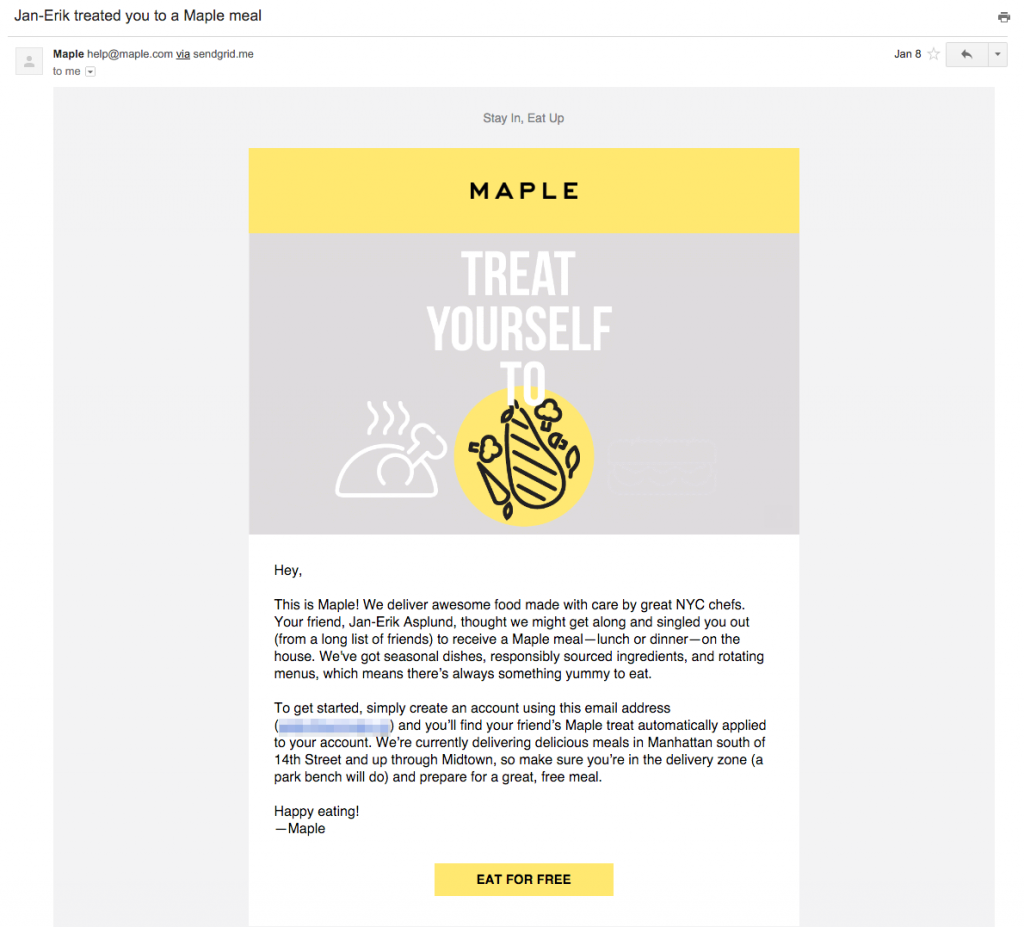We’ve all heard the referral success stories. Dropbox used referral to jump to from 100,000 users to 4 million in 15 months. Paypal used referral to hit between 7 to 10% daily growth, reaching 100 million users.
Looking at these massive figures, it becomes easy to get discouraged and dismiss referral as a kind of silver bullet, a one-off event that’s worked for other companies, but isn’t viable for your own business.
You’d be wrong. The reason why these companies implement referral is simple: it’s effective. The most crucial element of building a successful referral program isn’t about virality, or sky-high growth numbers—it’s about building a referral strategy on top of a solid foundation of unit-economics.
Let’s dive into the nuts and bolts of how some of the most successful referral programs today actually work.
The Holy Ratio
Conventional wisdom dictates that if your lifetime value (LTV): customer acquisition cost (CAC) ratio is greater then 3, your company has the fundamentals in place to build a trajectory of growth. A customer’s LTV is a projection of how much each customer will spend with your brand over the lifetime of that customer. Your customer acquisition cost for referral calculates how much your referral incentives actually cost you.
Part of what makes the economics of referral so appealing is that they boost overall LTV by 25%. Referred customers on average have higher order values, are less likely to churn, and are more likely to become advocates and refer friends in turn.
Meanwhile, CAC for referral is significantly lower then other marketing channels, but in order to implement it effectively, you need to balance it against future profit. What’s really crucial is that the LTV:CAC ratio shows you how efficiently you’re deploying your marketing and sales spend. A low ratio is a red flag that you’re paying too much to grow, while a high ratio shows solid fundamentals that you can build your business on.
We’ll use simple formulas:
LTV = Average Revenue per User (ARPU) x Gross Margin % x Customer Lifetime * 125% Referral Boost
CAC for Referral = Total Reward – Order Value x Gross Margin %
- ARPU = A measure of revenue generated per user or customer, over a period of time. For this article, we’ll use one year.
- Gross Margin = The percent of revenue a company retains after the direct costs of goods and services produced.
- Customer Lifetime = The average time a customer spends with a company.
- Referral Boost = The factor by which referred customers have higher LTVs.
- Total Reward = Total referral incentive on both the advocate and friend side.
- Order Value = Total value of initial referral order for the advocate, friend, or both.
Note: These calculations are speculative, and based on estimations of the available data at hand. What’s useful is getting into the thick of how successful companies actually implement referral incentives.
Uber
- ARPU: Devon Edward’s calculations show that factoring in Uber price cuts, the average Uber ride costs $17, while users take an average of 2 rides a month. ARPU = $17 x 2 trips/month x 12 = $408
- Gross Margin: According to Travis Kalanick, CEO and co-founder of Uber, gross margin sits at around 20%.
- Customer lifetime: Based on leaked Uber data from 2014 the average Uber customer sticks around for 4 years.
- CAC for referral = Depending on location, Uber offers a dual-sided incentive: $20 dollar credit to referred friend and a $20 to each advocate toward their next ride. CAC = $40 total reward – ($34 initial order value for the advocate and friend x .20) = $33.20
LTV = $408 x .20 x 4 x 1.25 = $408
CAC = $40 – ($34 x .20) = $33.20
LTV:CAC = 12.28:1
What this means is that Uber sees something along the lines of a 12.28x return on its investment just on each referred customer—its referral channel is crazy effective, and one of the reasons why referral is such a big part of Uber’s growth strategy. The cost-efficiency of referral as a channel for customer acquisition for Uber is way over the conventional 3:1 LTV:CAC golden ratio.
On the surface, a double-sided incentive of $20 seems like a lot. For an on-demand company, Uber’s margins look decent at around 20%—but they’re not making back referral credit on those margins, and are actually around $32 per ride new referred customer, which adds up very quickly. After the first ride, a referred customer has to stick around at least 4.7 months in order to earn back CAC. It’s a lengthy payback period, and one potential reason why the company’s so busy raising money.
What Uber’s betting on is that referred customers will take advantage of the incentive to score a free ride—and then stick around, as the service becomes an indispensable part of their lives. As Uber expands and its sales and marketing budget increases, the company continues to lose cash. With its referral program, Uber banks on continuing to build rapid growth—which it’s been able to maintain so far. For each consecutive quarter of 2015, for example, Uber grew at around 40%.
Bill Gurley, GP of Benchmark Capital and Uber investor, points out that as “Uber evolves in a city, the geographic area they serve grows and grows….This enlarged coverage area not only increases the number of potential customers, but potential use-cases.” Uber relies on the ability to penetrate geo-specific locations, and constantly increase adoption—it’s the only way it can continue to lower prices, create more demand, and evolve with new services like Uber X, Uber Pool, and UberEats.
That’s why referrals are such a winning strategy both for increasing user adoption and driver adoption—referrals are likely to occur in the same geographic location, and build network density.
The key to Uber’s success has been moving from a luxury white-glove, black car service to it’s current mantra: “Cheaper than a taxi.” As more and more referred customers and drivers fill the funnel, the flywheel effect is accelerated—more referred customers and higher demand leads to more drivers, lower prices, and even higher demand.
Expanding coverage density through referral is a scalable, cost-effective way that Uber can both aggressively tap into new markets, while doubling down on existing ones.
Hotel Tonight
- ARPU: $99 dollars is the most booked same day US rate for Hotel Tonight. The hospitality industry in the U.S sees an average stay length of 2 days. $99 x 2= $198 Let’s say that the average Hotel Tonight customer books 2 stays a year: ARPU = $396
- Gross Margin= Hotel Tonight takes around 20 – 30% cut per transaction, so let’s say a gross margin of 25%.
- Customer lifetime: Hotels are expensive, and discount shoppers using app like Hotel Tonight aren’t always the most loyal customers. Meanwhile, competition in the hospitality industry is fierce. Let’s assume an average 1 year lifetime for each Hotel Tonight customer.
- CAC for referral = For each referred customer signs up for Hotel Tonight they get $25 off their first booking of an order of at least $135. When the referred friend completes a stay, the advocate gets $25 off their next booking. The total dual-sided incentive for a referred customer is $50 off. For an initial order total of $270, for both advocate and friend, Hotel Tonight takes a 25% cut, netting it around $67.50. CAC = $50 – $67.50 = -$17.50.
LTV= $396 x 1 x .25 x 1.25 = $123.75
CAC = $50 – ($270 x.25) = -$17.50
Hotel Tonight’s dual-sided incentive is structured so that for each referred friend that converts, the company actually makes $17.50 on the margins of the transaction, and doesn’t spend anything. The LTV:CAC ratio doesn’t apply. You simply don’t see this in other customer acquisition channels—with referral, Hotel Tonight can guarantee profit before “paying” for new customers, or CAC.
Hotel Tonight’s refer-a-friend program strategically requires a minimum stay of $135 on both the advocate and the friend side, so the order value is just large enough to make the referral program profitable on the margins.
According to Sam Shank, founder of Hotel Tonight, this referral program is a key pillar of the company’s marketing, and “[word-of-mouth] drives the majority of growth.” The low cost of referral allows Hotel Tonight to grow and acquire new users in away that’s aligned with it’s larger business strategy—to provide an incredible customer experience, and offer quality, 24/7 support. Happy customers lead to more referrals, which lead to more customers.
And it’s working. Over two years, Hotel Tonight has seen a 300% increase in bookings.
It’s easy to see why referral is so important for Hotel Tonight when you consider the fact that the fast-growing company is competing in an industry of giants. Expedia, for example, spent $2.8 billion on marketing in 2014, while Priceline had a similarly mind-boggling budget of $1.8 billion for online ads.
Hotel Tonight has raised $80.69M in funding—not pennies, but nowhere near enough to spend on the same level as the competition. Every dollar it spends on customer acquisition has to count.
With it’s referral program, Hotel Tonight can target a broad spread of advocates and friends—both casual users, and potential evangelists who travel frequently for work or business. It’s able to build word-of-mouth buzz around its product, without burning through cash on customers who only use the app once.
Maple
- ARPU: Each Maple order costs either $12 for lunch, or $15 for dinner, with tax, delivery and tip included. Let’s average that out to $13.50. Regular customers probably order around once a week. $13.50 x 52 weeks = $702.
- Gross Margin: Traditional restaurants often operate on hairline margins—7 to 16% in the city of San Francisco . Food services like Maple own the entire production of food and delivery costs—allowing them to build at scale, and net higher margins. Maple’s margins are probably around 20%, if not higher.
- Customer lifetime: Maple’s still a new company, so there’s no way to really calculate customer lifetime. Nevertheless, there’s a huge amount of competition within the on-demand food delivery space. Let’s assume that Lifespan is 6 months, or .5 years.
- CAC for referral: Maple offers a one-sided referral incentive of $15 for each referred friend. $13.5 initial order from a friend x 20%= $2.70. CAC = $15 – $2.70 = $12.30.
LTV = $702 x .5 x .20 x 1.25 = $87.75
CAC = $15 – ($13.50 x .20) = $12.30
LTV:CAC = 7.13:1
Maple is a food delivery service in New York City, launched last April by serial restauranteur David Chang. For it’s referral channel, Maple’s LTV:CAC ratio sits at around 7.1x. That’s not incredible compared to Uber or Hotel Tonight, but it still probably makes referral Maple’s most efficient channel of customer acquisition.
The reasoning behind Maple’s single-sided incentive structure is pretty straightforward—the company does well on referral but, offering a $15 reward for advocates would only double that expense and bring LTV:CAC ratio down to 3.5x. Maple’s betting that what it brings to the food delivery experience will be pleasurable enough to get advocates to spread the word without a monetary incentive.
What makes Maple’s referral program particularly interesting is the fact that you have to order from the company twice before you’re allowed to refer friends—and even then you’re limited to 5 invites.
With this strategy, Maple ensures maximum bang for it’s buck through referral. By ordering at least two meals, advocates have proven their genuine interest in the service. Meanwhile, the scarcity of invites ups the chances that they’ll spread the word to like-minded friends, who will actually use Maple more then once.
The company’s still relatively new, and with this cautiously designed referral program, it can build the insights it needs to iterate on and perfect its overall referral marketing strategy. Maple’s less interested in attaining a huge amount of customers then the right customers, who will keep coming back for more.
Backed by around $26 million in venture funding, Maple’s betting on expansion—it’s goal is to deliver 100,000 meals per day in New York City. Like Uber, Maple’s referral program is trying to take advantage of the huge upside of the network effect. The more customers it acquires, the more it can expand operations, sending deliveries to larger and larger areas of New York City.
Delivering more meals is the only way Maple will be able to scale down operating costs and increase margins, boosting LTV. By harnessing referral, it doesn’t have to deal with prohibitively high customer acquisition costs, and can target the kind of customers that will help it grow.
The Road to Sustainable Referral
People often think that referral programs give money away for free, and push customer acquisition costs higher—but this couldn’t be further from the truth. With referral, you can actually achieve a dramatically lower CAC compared to other marketing channels, and build growth over the long haul.
With these economics, it’s your job to get the most people possible referring their friends to your brand. Referral is inherently aligned with your larger business goals—create products and services that people love and can’t live without, and watch your funnel fill up.








